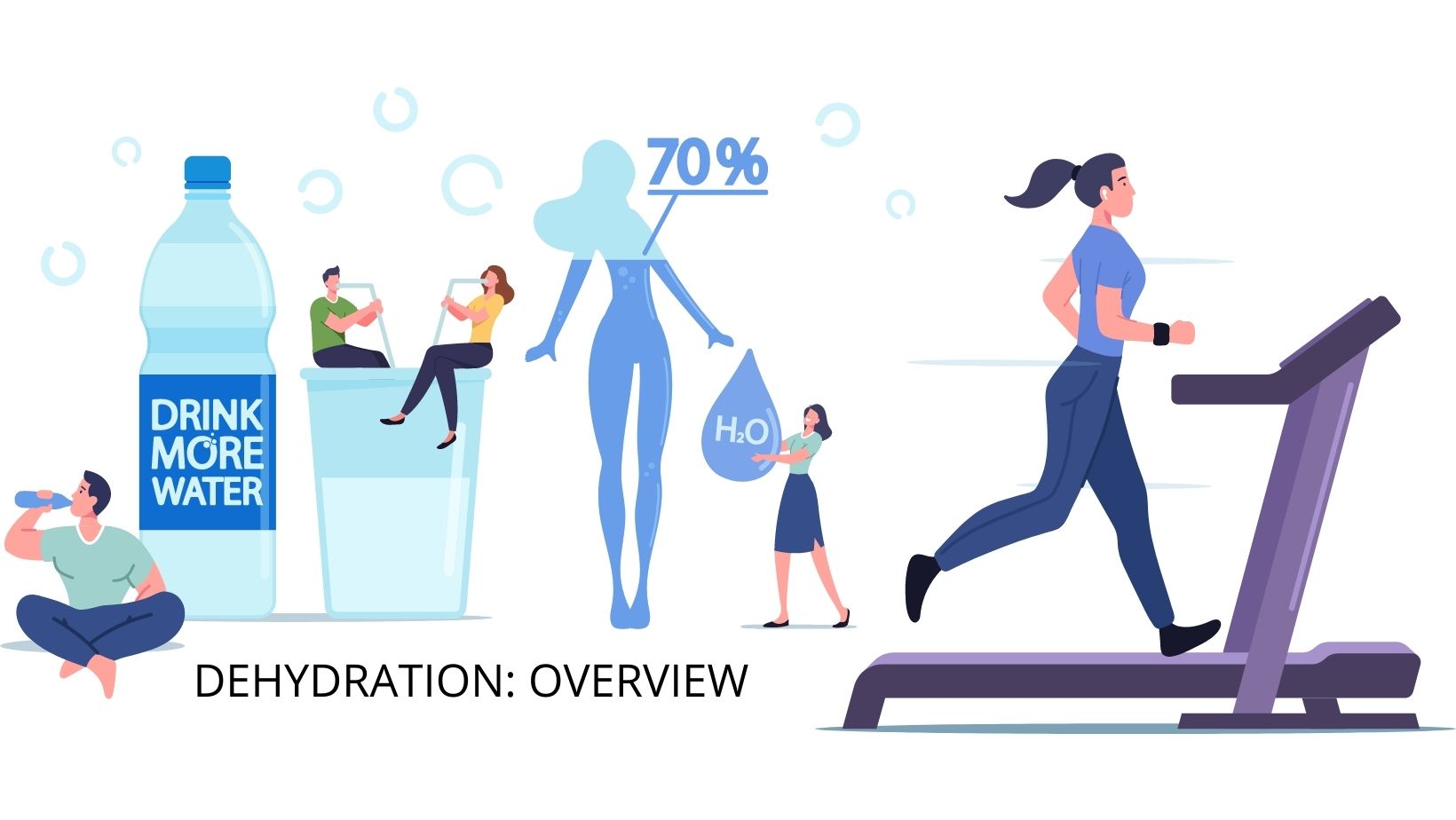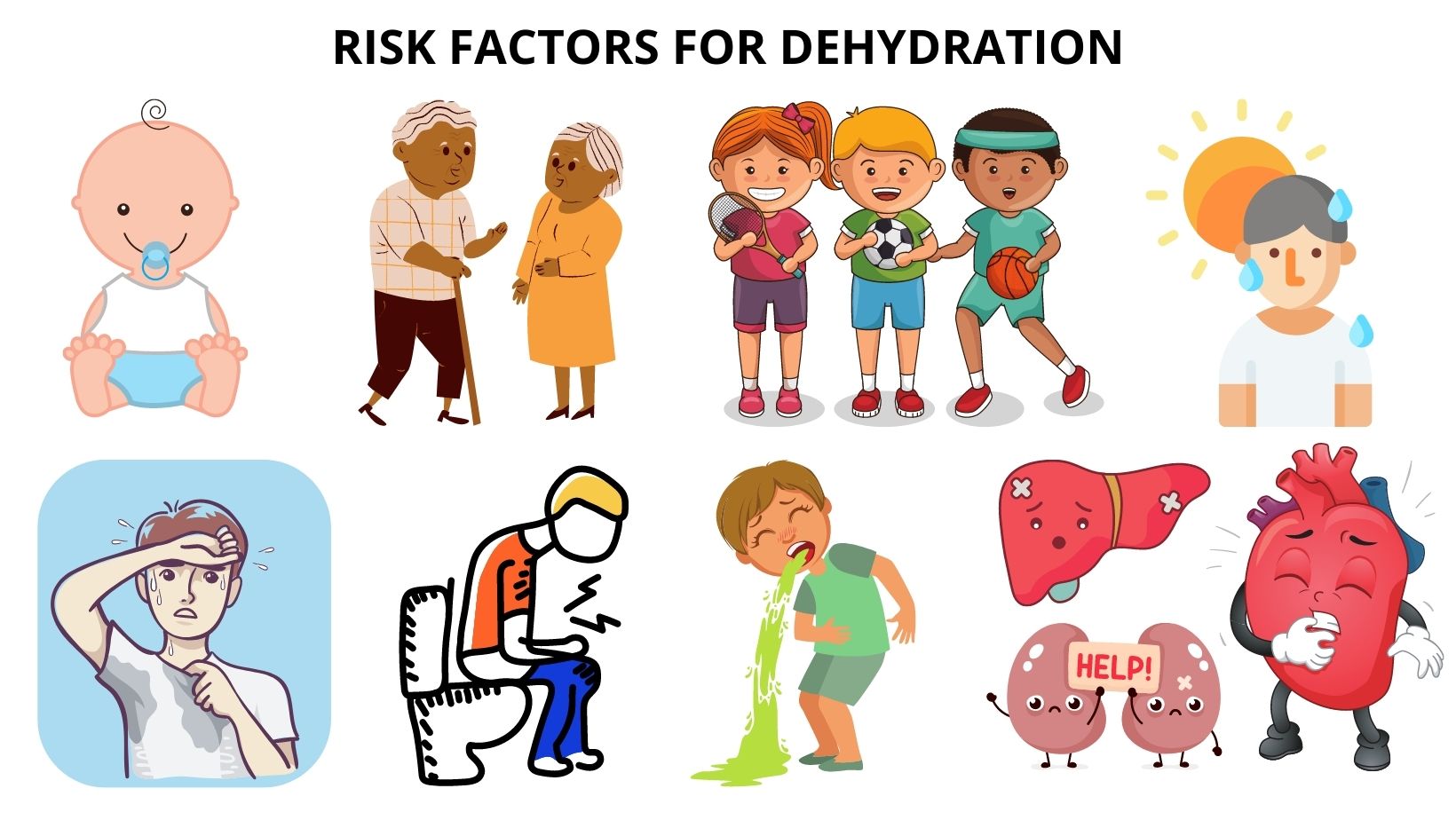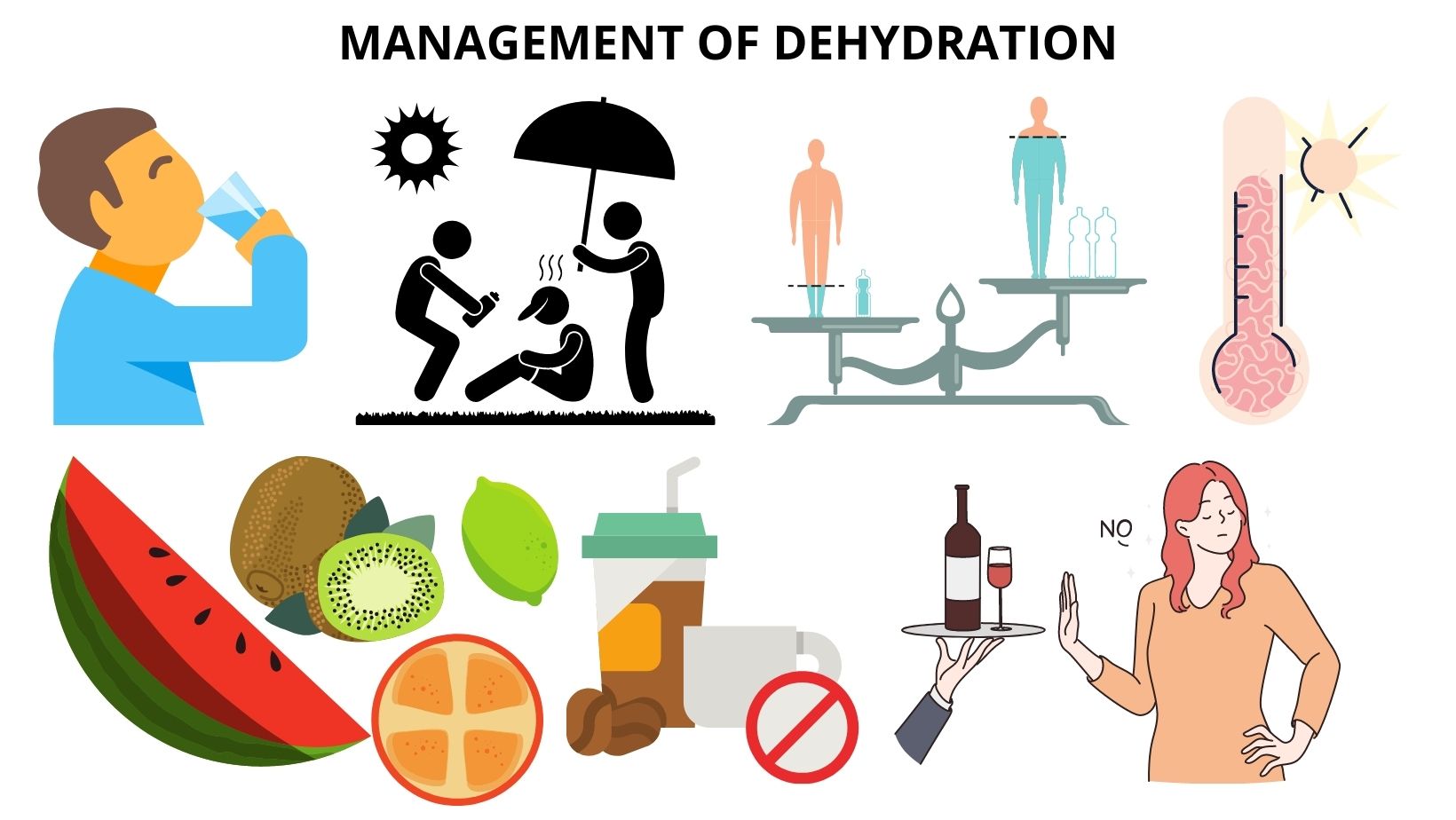THE DEFINITIVE GUIDE FOR THE TREATMENT OF DEHYDRATION
 WHAT IS DEHYDRATION?
WHAT IS DEHYDRATION?
About 75% of our body weight is water. Water/fluid helps to maintain normal body activities. Our body gets water mainly by diet while losing it through sweat and urination. Dehydration occurs when the body loses more fluid than it consumes and if severe, it can cause major complications.
WHAT ARE THE RISK FACTORS FOR DEHYDRATION?
- Infants
- Old adults
- Athletes
- People residing in a hot climate and those who sweat a lot
- Having severe diarrhea and, or vomiting.
- Any chronic heart, kidney, or liver complaint.
 WHAT ARE THE COMPLICATIONS OF DEHYDRATION?
WHAT ARE THE COMPLICATIONS OF DEHYDRATION?
Dehydration can cause a lack of sweat, sunken eyes, low blood pressure, increased heart pulse or fever. Most cases of dehydration can be easily reversed by increasing fluid intake. Severe dehydration can even lead to hypovolemic shock and kidney failure which are medical emergencies.
SYMPTOMS OF DEHYDRATION
Signs and symptoms of dehydration include:
- Dry mouth and lips
- Decreased urination
- Dark yellow urine
- Lethargy and dizziness
- Confusion
- Weak memory
- Mood swings and irritability
- Difficulty in concentrating
- Constipation and
- Headache
- In infants- irritable mood, depressed fontanelle, sunken face, crying without tears.
CAUSES OF DEHYDRATION
Causes consist of not drinking enough water, having prolonged diarrhea and vomiting, and chronic heart or liver disease or severe burns.
DIAGNOSIS OF DEHYDRATION
Diagnosis of dehydration can be made by signs and symptoms as above mentioned. Furthermore, you can be advised to undergo a blood test for measuring various electrolyte levels and a urine test to assess the level of dehydration.
In severely dehydrated children, a “pinch test” is often performed to test dehydration. Steps are:
- The child is made to lie on his/her back with arms by the sides.
- Pinch the skin of their abdomen halfway between navel and side with the thumb and index finger.
-
- The fold of pinched skin should be vertical.
- Pick all the tissues of the area together.
- Beware of your fingertips as they can be painful to the baby.
- Hold it for 1 second.
- Release it
- Observe how much time it takes for the skin to go back to its original place.
- Immediately
- In 1-2 seconds
- More than 2 seconds.
**It is to be noted that this is not a definitive sign of dehydration as the skin takes time to go back to its original state in severe malnutrition and edema as well even if the child is not dehydrated.
TREATMENT OF DEHYDRATION
Dehydration is treated by replenishing the fluid level of the body. In adults with mild to moderate dehydration, ORS solution and water helps in balancing the water and electrolytes level. Otherwise, fluids can also be supplied intravenously.
MANAGEMENT OF DEHYDRATION
- Dehydration can be prevented by - drinking plenty of fluids throughout the day.
- Have fresh fruits and vegetables rich in electrolytes and fluid content.
- Limit intake of caffeinated drinks and alcohol as it can dehydrate the body further.
 DO’S AND DON'TS
DO’S AND DON'TS
DO’S
- Drink plenty of fluids in the form of water or fluid-rich fruits and vegetables.
- Cover as much skin as possible in hot climates under the sun.
- Carry a water bottle with you when engaging in some sort of outdoor activity.
DON'TS
- Avoid coffee, tea, and soft drinks.
- Avoid alcohol in large quantities.
Comments
We have received your comment , Thank You !